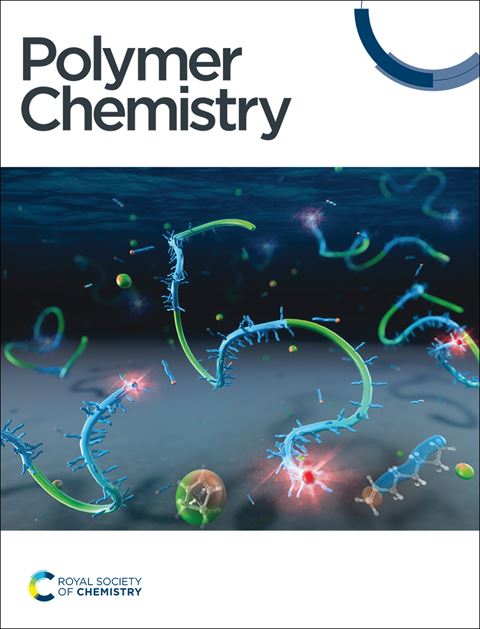Effect of biphenyl groups on the properties of poly(fluorenylidene piperidinium) based anion exchange membranes for applications to water electrolyzers
IF 4.1
2区 化学
Q2 POLYMER SCIENCE
引用次数: 0
Abstract
A series of quaternized poly(arylene fluorenylidene piperidinium)-based copolymers were synthesized using different hydrophobic components, including biphenyl, m- or p-terphenyl, and 9,9-dimethylfluorenyl groups. Among them, the quaternized poly(biphenylene fluorenylidene piperidinium) had the best solvent solubility and membrane formability. Transmission electron microscopy showed that poly(biphenylene fluorenylidene piperidinium) (QBPh-Pip) had a well-interconnected nanoscale phase-separated morphology. The QBPh-Pip membrane with an ion exchange capacity of 1.9 mequiv. g−1 exhibited the most balanced properties, with low water uptake (95% at 80°C), low swelling (45%), and high hydroxide ion conductivity (160 mS cm−1 at 80°C). Despite the low water absorption, rapid ion mobility led to high ion conductivity, as calculated using normalized diffusion coefficients. Furthermore, the QBPh-Pip membrane exhibited excellent alkaline stability (91.5% (141 mS cm-1) of the initial conductivity after 1,000 h in 8 M potassium hydroxide at 80°C) and excellent mechanical properties (29.0 MPa of maximum stress and 134% elongation at break). In a water electrolysis cell using a nickel iron oxide anode catalyst, the QBPh-Pip membrane achieved a low cell voltage (1.7 V at 1.0 A cm−2) with 72% efficiency. The QBPh-Pip cell was durable for 1,000 h at a constant current density of 1.0 A cm−2 with minor voltage decay of 70 μV h−1.联苯基团对应用于水电解器的聚(亚芴基哌啶)阴离子交换膜性能的影响
利用不同的疏水成分,包括联苯基、间或对三联苯基和 9,9-二甲基芴基,合成了一系列季铵化聚(芳基芴基哌啶)共聚物。其中,季铵化聚(联苯亚芴基哌啶)具有最佳的溶剂溶解性和成膜性。透射电子显微镜显示,聚(联苯亚芴基哌啶)(QBPh-Pip)具有良好的互连纳米级相分离形态。离子交换容量为 1.9 mequiv. g-1 的 QBPh-Pip 膜具有最均衡的特性,吸水率低(80°C 时为 95%),膨胀率低(45%),氢氧根离子导电率高(80°C 时为 160 mS cm-1)。尽管吸水率低,但根据归一化扩散系数的计算,离子的快速迁移导致了离子的高电导率。此外,QBPh-Pip 膜还具有出色的碱性稳定性(在 8 M 氢氧化钾(80°C)中 1000 小时后的初始电导率为 91.5% (141 mS cm-1))和出色的机械性能(最大应力为 29.0 MPa,断裂伸长率为 134%)。在使用氧化镍铁阳极催化剂的水电解池中,QBPh-Pip 膜实现了较低的电池电压(1.0 A cm-2 时为 1.7 V)和 72% 的效率。QBPh-Pip 电池在 1.0 A cm-2 的恒定电流密度下可持续使用 1,000 小时,电压衰减很小,仅为 70 μV h-1。
本文章由计算机程序翻译,如有差异,请以英文原文为准。
求助全文
约1分钟内获得全文
求助全文
来源期刊

Polymer Chemistry
POLYMER SCIENCE-
CiteScore
8.60
自引率
8.70%
发文量
535
审稿时长
1.7 months
期刊介绍:
Polymer Chemistry welcomes submissions in all areas of polymer science that have a strong focus on macromolecular chemistry. Manuscripts may cover a broad range of fields, yet no direct application focus is required.
 求助内容:
求助内容: 应助结果提醒方式:
应助结果提醒方式:


